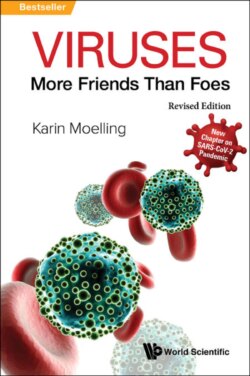Читать книгу Viruses: More Friends Than Foes (Revised Edition) - Karin Moelling - Страница 37
На сайте Литреса книга снята с продажи.
The Berlin patient and the Mississippi baby — cure HIV?
ОглавлениеA unique therapeutic effect to cure a patient was achieved at the Charité Hospital in Berlin. A patient with HIV and a lymphoma was due to receive a bone-marrow transplant against the lymphoma. For that, a special donor was selected, one who was naturally resistant against HIV. The hope was that the “Berlin patient” would become resistant too and be cured — and this was indeed what happened. About 15% of Europeans are resistant to HIV infection because of a natural mutation in the surface receptor that the virus needs to enter the cell. (The receptor is a chemokine receptor CCR5 and the mutation is called CCR5delta32 because the molecule is shortened by 32 amino acids.) Some research was performed with survivors of the Black Death, to see whether they survived because of exactly this mutation in the Middle Ages. Graves were opened to sequence some of those survivors — however, the speculation appears probably to have been unfounded.
A bone-marrow transplantation and replacement of HIV-resistant lymphocytes was successful. So the lucky survivor Tom Brown was “functionally cured” since ten years — that is the description for someone whose viral load, VL is undetectable but may lead to a later remission. Even better would be a “sterilizing” cure without remission. Eight repeats of the same procedure failed subsequently. Repeats for AIDS patients cannot be easily performed because it requires almost a complete removal of the patient’s immune system — a risky procedure. Thus, this case is at best a model for novel therapeutic approaches. They are indeed pursued by either blocking or knocking out the receptor CCR5 (by silencer RNA), so that the virus cannot enter the cell. People can dispense with the receptor and live normally without it.
Another case of near-cure was the Mississippi baby. It was treated directly after birth (within 30 hours), which can be done because the therapies are not as toxic as they were. The baby was treated for 19 months with ART. Nineteen other babies were treated in the same way, by this so-called post-treatment control (PTC), which controls the virus. The control is, however, not complete, as the virus came back after four years in the Mississippi case. But another child has now been “functionally cured” for more than 12 years, so we may hope that the residual virus will stay under control for the person’s entire life. (At least five logs (100,000-fold) reduction of the viral load VL down to about 50 viral copies/ml is required.)
New approaches aim to cut out the integrated HIV with molecular scissors, which will easily be more possible with a brand new technology with molecular scissors described below (CRISPR/Cas9). This would require ex vivo gene therapy of selected cells, perhaps viral vectors for treatment and reinfusion, and a second therapy to fight against “minimal residual disease”, left over cells, because no therapy works 100 percent. Who can pay for this type of research and later treatment — where? In Africa? Yet even a whole new journal Cure HIV was founded. A big hype. Another novel approach is to activate the virus in the patient’s reservoirs (by a drug Vorinostat) to make it accessible for therapies. This is being tested in a study called DARE — a meaningful acronym, because it sounds a bit risky first to increase the number of viruses in order then to kill them. Furthermore, the so-called “Elite Controllers” are being investigated to find out what mechanism can control the virus. They have special features in their immune system (HLA-B57), which may be exploited; this possibility is being explored in a study called VISCONTI (Virology and Immunology Study on CONtrollers after Treatment Interruption). A major simple message is: treat early!
